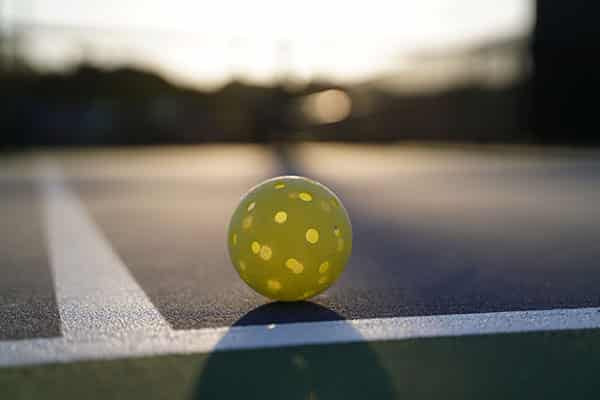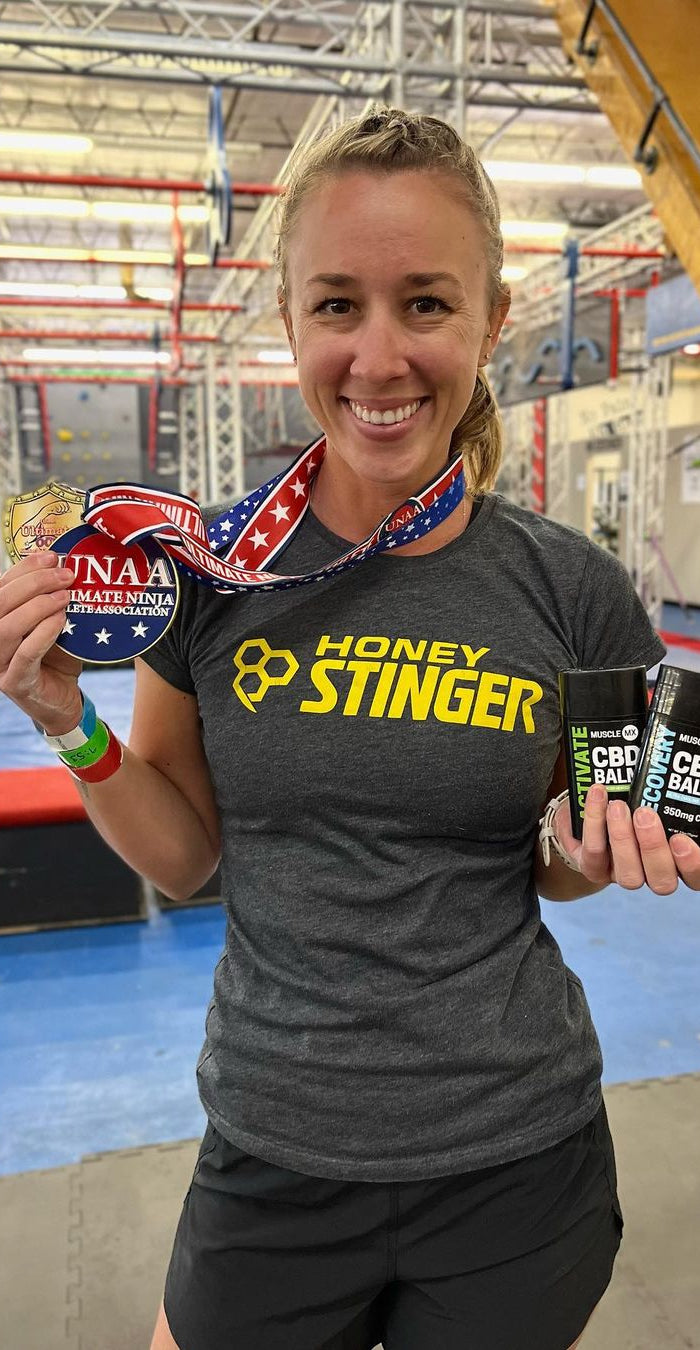Equipment needed
Like any other racket sport, players need to acquire specially designed equipment before engaging in pickleball. Pickleball equipment includes:
Pickleball Ball
The pickleball ball is similar to a Wiffle ball as it is lightweight and has numerous holes to enhance aerodynamics. The plastic ball may be between 2.87” to 2.97” in diameter and have 26 to 40 holes. The ball comes in different colors like green, pink, yellow, and white, with brighter colors being more visible and easier to hit. There are two different balls, one for indoor and another for outdoor play. Indoor balls are softer and lighter, with larger and fewer holes, making them easier to control. Outdoor balls are harder and heavier for improved resistance against the hard outdoor pickleball court surface, cold temperatures, and gusts of wind. The balls have smaller and more numerous holes than indoor ones, making them move faster. Pickleball balls tend to crack and wear out on cold days, so having several on hand during a game is advisable.
Pickleball Paddle
Players use pickleball paddles or bats for hitting the ball. The paddle resembles a ping-pong paddle but is bigger, has rounded edges, and has a robust handle. When choosing a paddle, consider buying one that is reliable and durable. Cheap paddles with low-quality materials are less likely to withstand the test of time. Pickleball paddles with wooden handles are less durable, while aluminum paddles are ideal for beginners. Most paddles weigh between 6 to 14 ounces, with heavier ones not necessarily being more durable. Before buying a bat, players must check if the handle settles comfortably in their grip. If the handle is too wide with the grip too big, it can slip out of the player's hand and strain the elbow.
Pickleball Net
The pickleball net that divides the court in two is usually 36” high on the tied ends and 34” high in the middle where it dips. Manufacturers make the net from tough synthetic fiber that is easy to fold and store. Some pickleball courts have fixed nets, while others use portable ones.
Pickleball Court
The pickleball court measures 20 feet by 44 feet, similar to a standard badminton doubles court. The playing area needs to be 30 feet wide and 60 feet long, with service lines dividing the outer courts. The non-volley zone (NVZ) lies 7 feet on either side of the pickleball net.
Pickleball Clothing and Footwear
Pickleball participants should play the game in the appropriate apparel. Loose-fitting and breathable clothes allow players to move about the court freely. Heavy fabrics limit movement and increase the risk of physical strain. Comfortable pickleball shoes with the right fit and proper grip are crucial to preventing injuries in the lower extremities.
Other Pickleball Equipment and Resources
Players may experience strains or sprains to the trunk, lower back, and extremities when playing pickleball. Injuries commonly arise from falls or after a pivoting movement, like sudden turning. Pickleball players can use Muscle MX Activate and Recovery CBD balms when warming up and during recovery. Applying the Muscle MX CBD Activate on muscles, tendons, and joints before an activity ensures optimal performance and prevents injury. Muscle MX CBD Recovery is 100% natural, fast-acting, long-lasting, and has anti-inflammatory properties. This CBD product cools aches and pains to enhance recovery.
|


































